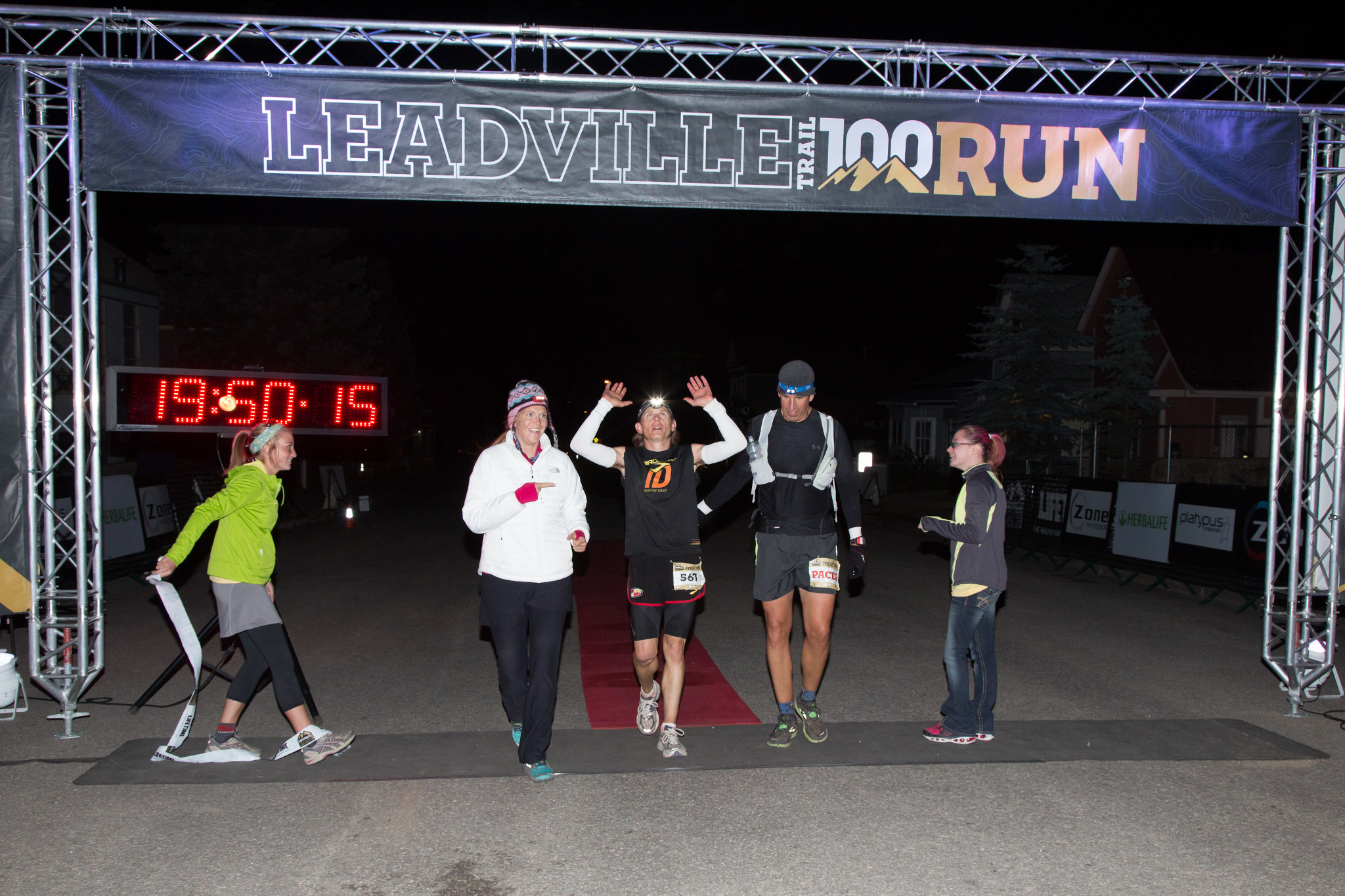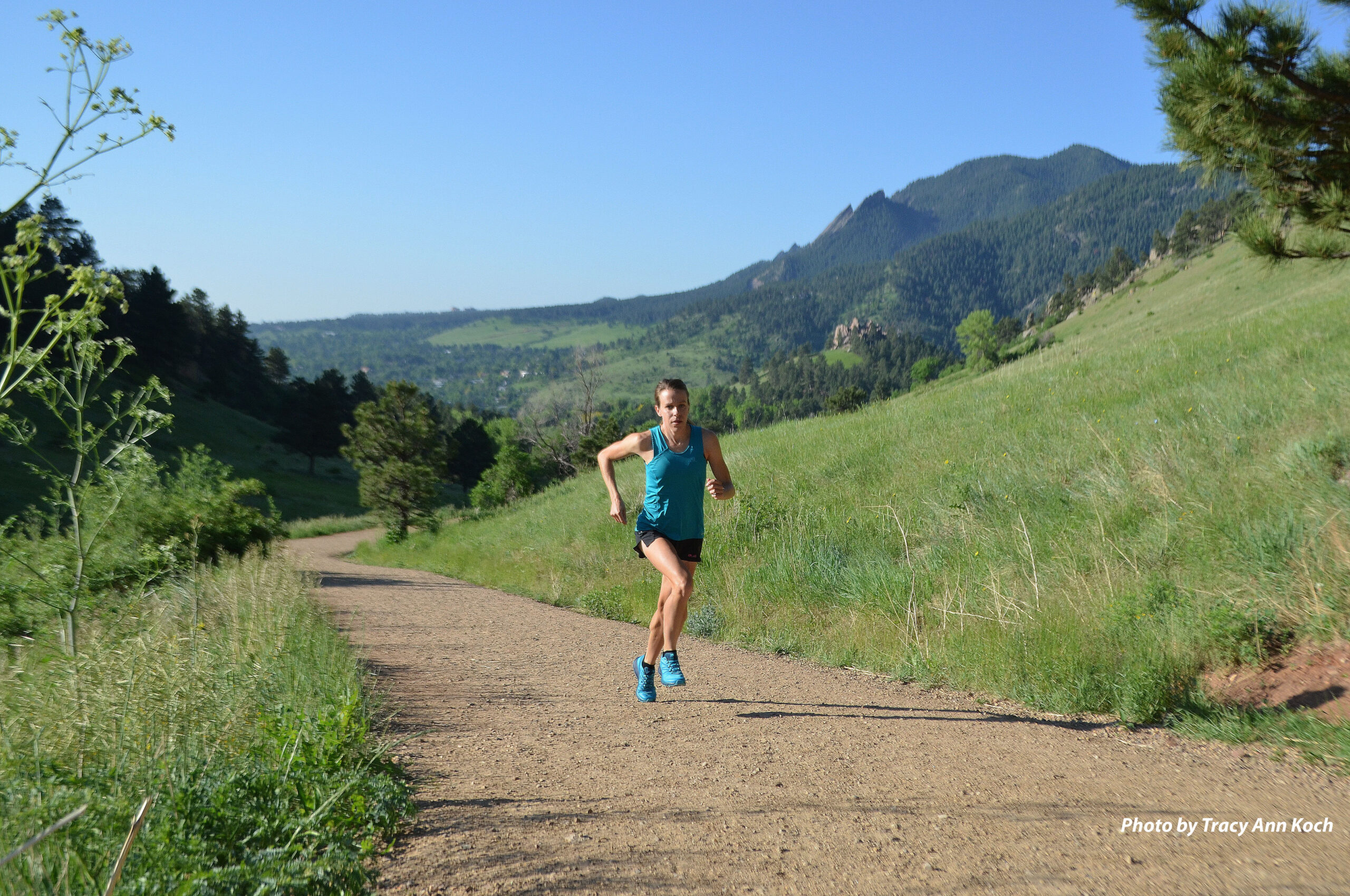
Dispatches From Hope Pass – 10 Fueling Tips from Grand Slam Champion Abby McQueeney Penamonte
Proper fueling during the Leadville Trail 100 Run can make the difference between the finish you hope and plan for and a long, graphic sob story. Tackle this ultra and avoid an ultra-nutrition fail with these tips.
It is a sad story nearly every ultrarunner knows well. You train hard, log the miles, study the course, make it to the starting line without injury; you know you are ready to have a great race. And for 40, 50, 60 or even 80 miles, you do. Then it happens. Something goes terribly wrong and you find yourself doing a zombie impersonation, or worse, assuming positions trailside that are usually reserved for college students after a particularly hard night of partying.
No matter how much you will your legs forward, they won’t cooperate. Your head is foggy and your stomach feels like you just spent an hour straight on the Tilt-A-Whirl at an amusement park. Basically you are having an ultra-nutrition fail.
There are steps you can take to ensure your Leadville story won’t look like the above. I sat down with the 2013 female champion of the Grand Slam of Ultrarunning (which includes the Leadville Trail 100) and registered dietitian Abby McQueeney Penamonte. Read on for her invaluable advice.
What top three considerations should a first-time Leadville 100 runner take when devising a nutrition strategy?
- Improve your daily nutrition. I equate a race to a final exam. You can’t successfully cram for a final exam. You have to make sure that you do the homework every day to support your training and improve your fat efficiency and recovery so that you arrive healthy at the start line. Your daily nutrition transfers over to your race-day nutrition efficiency. A balanced daily nutrition plan includes ample vegetables and a little fruit, moderate protein, plentiful fats and adjusting your carbohydrate intake based off of your goals and daily training.
- Determine your goal for calories per hour and what product(s) you will be using for fuel. Practice this before long runs/races.
- Determine your goal for hydration and electrolytes per hour and what product(s) you will be using. Practice this before long runs/races.
From your perspective as an RD and nutrition expert, as well as a competitive ultrarunner, what are the top three mistakes you see runners make in their race-day nutrition?
- Over-consuming calories.Running 100 miles is not an all-you-can-eat buffet. When you consume more calories than your body can process, you increase your chances of GI distress: bloating, nausea, vomiting and diarrhea.
- Failing to practice your nutrition plan in training to mimic as best as possible a 100-mile race. Or simply not having a race-day nutrition plan or neglecting to consume adequate calories, water and electrolytes. Once you get behind your fueling schedule it’s tougher to catch up.
- Not having a backup plan regardless of your nutrition training. Sometimes what sounded appealing during months of training and racing shorter distances just doesn’t work or sound pleasing at mile 75. Hydration and electrolyte needs also change as the sun goes down. Be sure to have different flavors of your staple items, different food options or be open to the aid station assortment. You have to be somewhat.
How do environmental factors (such as altitude) affect fueling?
Certainly the weather and altitude in Leadville impacts a runner’s nutrition and hydration strategy. The challenge is that being at a higher altitude requires additional fuel; however, being at a higher altitude can also decrease a runner’s desire or ability to consume adequate fuel. For bigger efforts like the double Hope Pass in the LT100 I might suggest focusing on liquid calories because it is easier to ingest and digest compared to solids
With less than three months to go, what steps can runners take right now to increase their chances of success?
Make sure that your daily nutrition and fueling during and after long runs is just as much a priority as posting your weekly mileage/average pace/vertical on social media.
There are a lot of diverse trends right now in the ultra scene regarding nutrition. Have you observed success in clients with a particular strategy?
I support and educate a lot of my athletes on low carb-high fat (LCHF) diets. This is particularly important for endurance athletes. LCHF diets teach the body to better utilize your abundant fat stores while sparing your carbohydrate stores and not impacting insulin levels. This can help athletes with training, endurance, recovery, improved body weight and composition, the decreased need for refueling and reduced GI distress.
Do you have a favorite recovery fuel?
I prefer to use protein shakes post workouts because they are quick, easy to prepare and portable, so I can bring it with me for after my long runs or races. I usually blend together some full fat coconut cream, avocado, Life Time Fitness Chocolate VeganMax Protein, Chocolate Dynamic Greens, Generation UCAN, cinnamon, water and ice. It is a perfect mix of fat, protein and sustainable fiber and carbohydrates for improved recovery and blood sugar regulation.
You competed (and won—for the GIRLS!) the Grand Slam of Ultrarunning last summer. Was there anything particular you learned about fueling doing so many 100’s in such a short span? Was your fueling different in each race?
Nutrition was an integral part of my success on the trails this past summer. I focused a lot on my diet in the months leading up to the Grand Slam. I follow a pretty strict LCHF diet, which allowed me to be more metabolically efficient. LCHF also helps with reducing inflammation and promoting quicker recovery, which was a huge benefit considering the quick race turnaround. I used Generation UCAN during my Grand Slam races. UCAN is a superstarch (it is a powder that mixes with water or can be made into a gel/paste) that doesn’t cause sugar/insulin spikes, therefore promoting better fat utilization with no sugar/energy crashes.
Despite my (extreme) attention to nutrition and race day execution, I also learned to appreciate what my body wanted at certain points in my races. This sometimes meant extra potato chips and broth in the Western States heat, a popsicle on the hot and humid Vermont country roads, some Ginger chews after the double Hope Pass crossing or a mini Butterfinger (or three) at mile 90 of Wasatch. Even the perfect nutrition plan has to be adjusted according to the race conditions and how the body is responding.
Have you observed specific differences between the fueling needs of men vs women?
Fueling needs during a 100-mile race really depend on someone’s efficiency and daily nutrition. If someone consumes a high-carb daily diet, they will depend more on carbs and calories during a race because that is their body’s dominant energy source. LCHF athletes have taught their bodies to rely on body fat and preserve carbs and muscle glycogen, which means that there is less need to refuel with carbs while running.
Is there typically a different fueling strategy for those with different finish goals (for example, racing hard vs. just finishing)?
Whatever buckle you are aspiring to bring home from Leadville, your fueling strategy will be equally important. What each runner needs to consider is how long you anticipate being out on the course and what your daily diet looks like. From there we can devise a nutrition plan to get you to the finish.
If there is one overarching piece of advice you could give LT100 runners on race-day fueling, what would it be?
Food is fuel and can enhance your performance (legally). Use it to your advantage.
So there you have it. Fueling can be, and often is, the difference between a finish (or PR, or podium) and a long, graphic sob story. Bottom line: Eat well now, have a race day plan and practice it in training, and of course, be flexible if it doesn’t go perfectly. The better you know your body, the better your chances are of fixing what goes wrong and coming back from it.
About Abby:
Abby is a Registered Dietitian who works at Life Time Fitness as a Nutrition Coach. She is a Metabolic Efficiency Specialist and understands nutrition periodization, nutrient timing and implementation strategies for ultrarunners. Abby coaches athletes in daily and race-day nutrition and helps them determine fluid, electrolyte, calories and caffeine/supplementation protocol.
Abby is also a competitive endurance athlete. In 2013 she completed the Grand Slam of Ultrarunning™, which includes completing four of the oldest 100-mile trail runs in the Unites States. The “Slam” consists of officially finishing the Western States 100 Mile Endurance Run (10th Female), the Vermont 100 Mile Endurance Run (8th Female), the Leadville Trail 100 Mile Run (7th Female) and the Wasatch Front 100 Mile Endurance Run (4th Female) all within ten weeks. She was the 1st female and 3rd overall for the 2013 Slam and currently holds the 4th fastest female cumulative time and 26th fastest all-time cumulative time.
Abby would love to help you with your Leadville nutrition plan and can be reached at 315-521-4354 or at abby.mcpenamonte@gmail.com.



